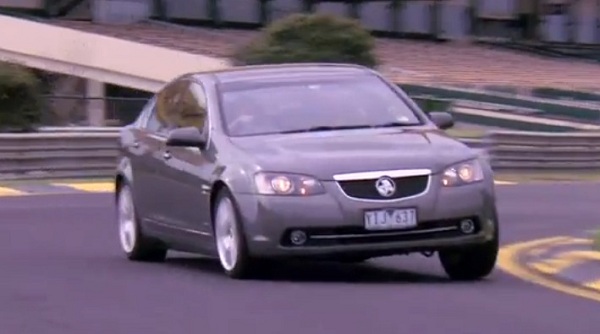It didn’t go 1,170 miles in 24 hours without stopping, but for an electric car, it’s still a mighty impressive distance — the equivalent of a mad dash from Seattle to Orange County, Calif. The Aussie consortium that pulled it off saw this unofficial EV world record as confirmation of their homegrown vehicle’s capabilities. You might also call it a pretty interesting argument for battery swapping as the answer to the EV charging challenge.
The driving in question was 15 and a half times around a 75.6-mile loop on public roads between Port Melbourne and Geelong, in Victoria, in a Holden Commodore EV developed by EV Engineering, which calls itself a “a consortium of Australian automotive suppliers and industry participants that has designed and built seven proof-of-concept electric Holden Commodores.” Holden is the GM subsidiary in Australia. The Commodore had a run of 15 consecutive years as Australia’s best-selling automobile model broken just last year.

The key to the success, the group said, was the use of battery swapping, where an EV designed for the procedure can in a matter of a couple of minutes have its depleted battery replaced by a charged one. Even the fastest charging stations, those that can deliver virtually a full charge in 30 minutes, can’t come close to that.
On the flip side, a swapping station is a much more expensive investment, costing around $500,000 while a fast-charging station is in the range of $25,000 to $40,000.
“When we began the project to develop a proof-of-concept electric Commodore, it was critical that we incorporate ground-breaking battery switch technology,” Ian McLeave, CEO of EV Engineering, said in a statement. “That’s what got us across the line. We were able to quickly switch our depleted battery for a fully charged one, so we didn’t have to park and plug in in order to recharge. We were able to just drive, switch, and keep going.”
In the U.S., the auto industry and EV charging infrastructure development are almost exclusively focused on plug-in charging. But Australia is set to become the third market – after Israel and Denmark – for the battery switching company Better Place. According to EV Engineering, the Holden Commodore EV used “a scaled-down version” of the switch stations that will come to Australia. When the car got a fresh battery at the end of each loop, there was usually 20 to 25 percent battery charge remaining, indicating the vehicle could have gone at least 90 miles before running out of juice.
Members of the EV Engineering project include Better Place and automotive component suppliers Bosch, Continental, Air International and Futuris, with support from the government-backed research agency CSIRO.
If you haven’t seen the Better Place battery switching technology in operation, be sure to check out this demo from the company. It’s pretty smooth: